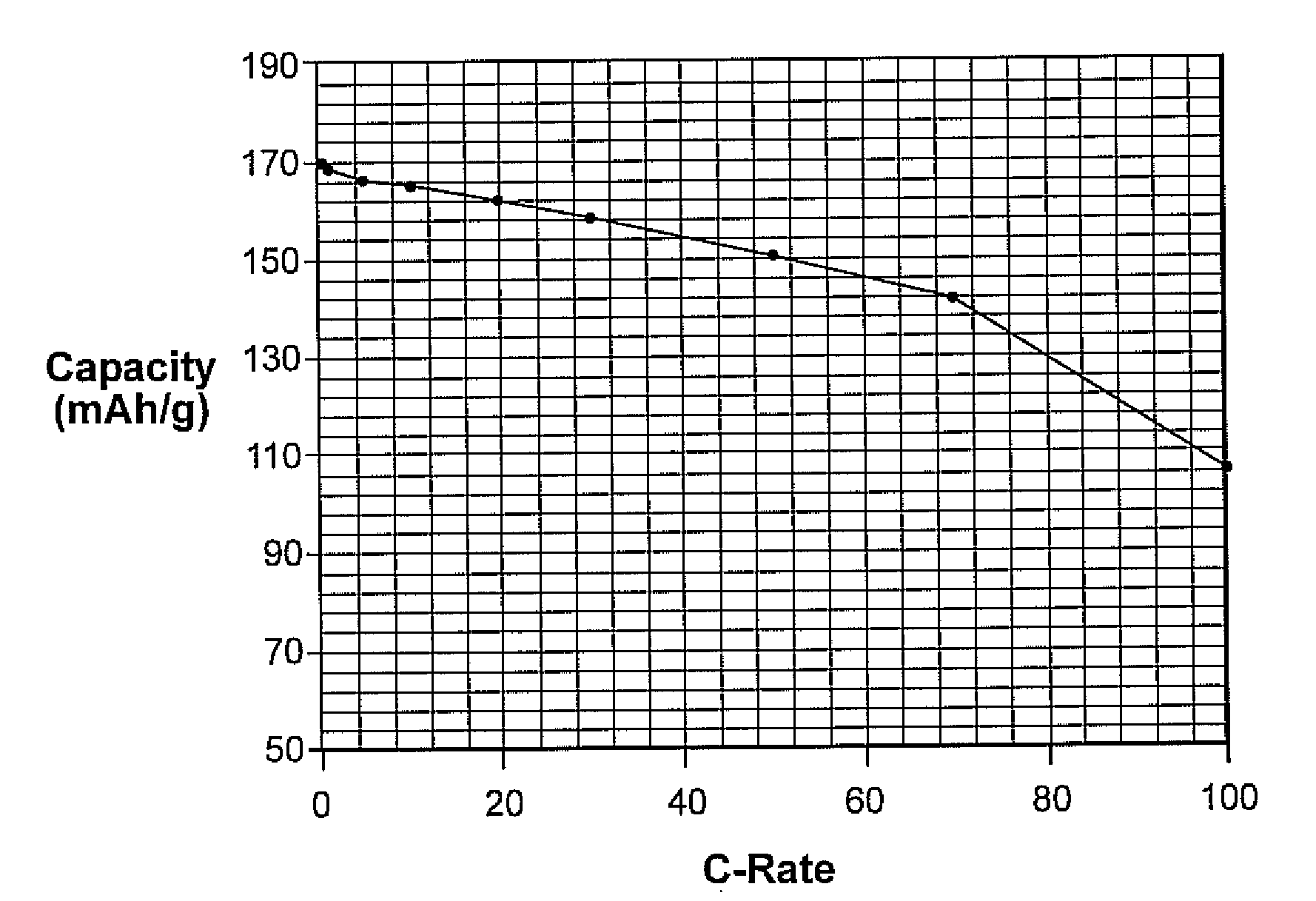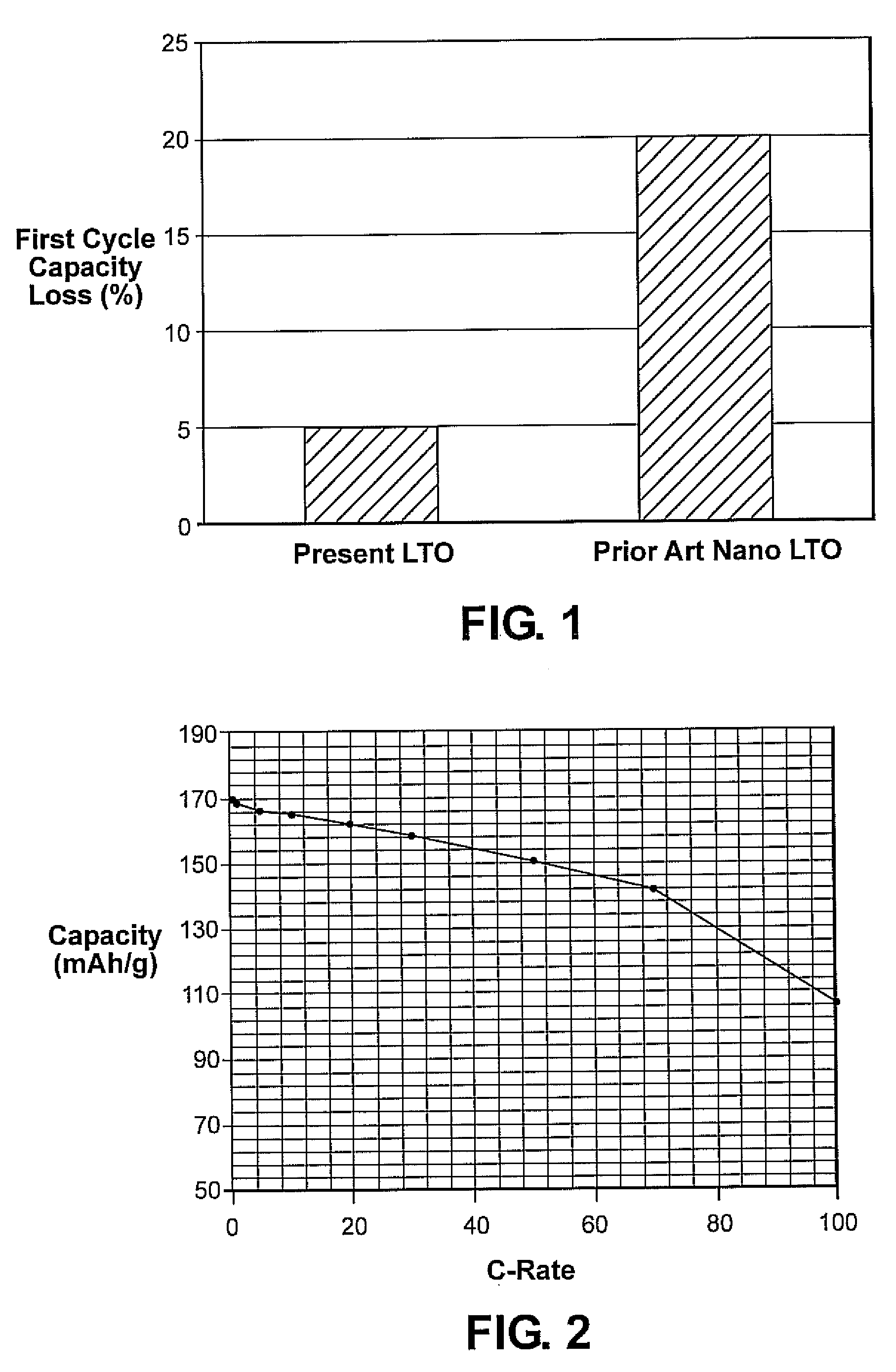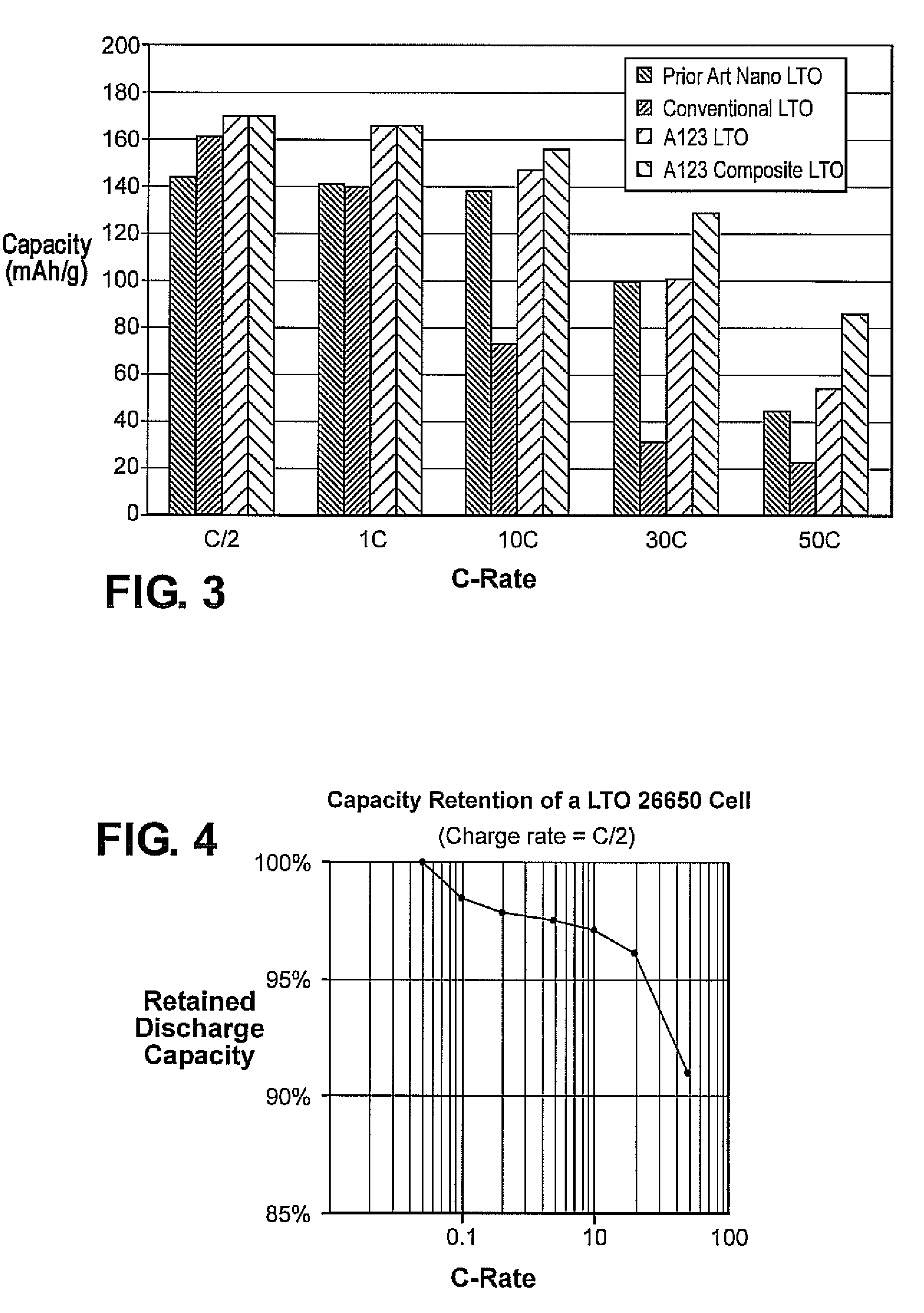Alkali metal titanates, and electrodes and batteries based on the same
a technology of metal titanates and electrodes, applied in the field of lithium titanates, can solve the problems of titanate materials suffering from problems of high rate charge and discharge capacity, increase the size and cost of batteries, and significant inefficiency, and achieve good high rate charge and discharge capability, good first cycle reversibility, and low agglomeration
- Summary
- Abstract
- Description
- Claims
- Application Information
AI Technical Summary
Benefits of technology
Problems solved by technology
Method used
Image
Examples
Embodiment Construction
[0020]In accord with one aspect of the invention there is provided a lithium titanate composite material. Generally, lithium titanate is recognized as having the formula Li4Ti5O12; however, as is recognized in the art, the stoichiometry of this material may, in some instances, vary without significantly altering the fundamental nature of the material. Such variations may be resultant from a slight oxidation or reduction of the material, minor variations of the LiTi ratio and the presence of adding species. Accordingly, within the context of this disclosure, all of such stoichiometric and non-stoichiometric materials are encompassed within the definition of lithium titanate.
[0021]In a specific group of embodiments, the lithium titanate is prepared from a starting material that includes a transition metal in an amount up to approximately 20 weight percent, and some such transition metals include one or more of V, Zr, Nb, Mo, Mn, Fe, Cu, and Co. In one particular instance, as is discus...
PUM
| Property | Measurement | Unit |
|---|---|---|
| size | aaaaa | aaaaa |
| size | aaaaa | aaaaa |
| size | aaaaa | aaaaa |
Abstract
Description
Claims
Application Information
 Login to View More
Login to View More - R&D
- Intellectual Property
- Life Sciences
- Materials
- Tech Scout
- Unparalleled Data Quality
- Higher Quality Content
- 60% Fewer Hallucinations
Browse by: Latest US Patents, China's latest patents, Technical Efficacy Thesaurus, Application Domain, Technology Topic, Popular Technical Reports.
© 2025 PatSnap. All rights reserved.Legal|Privacy policy|Modern Slavery Act Transparency Statement|Sitemap|About US| Contact US: help@patsnap.com



